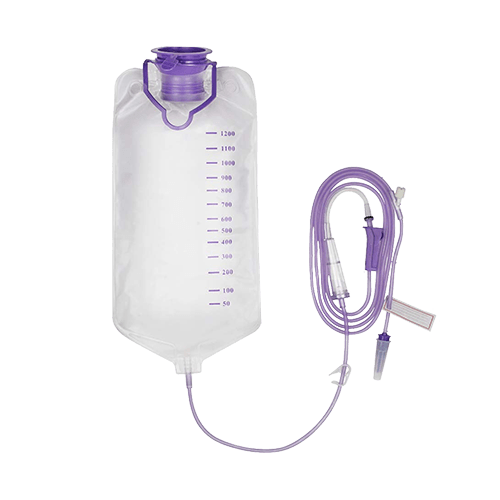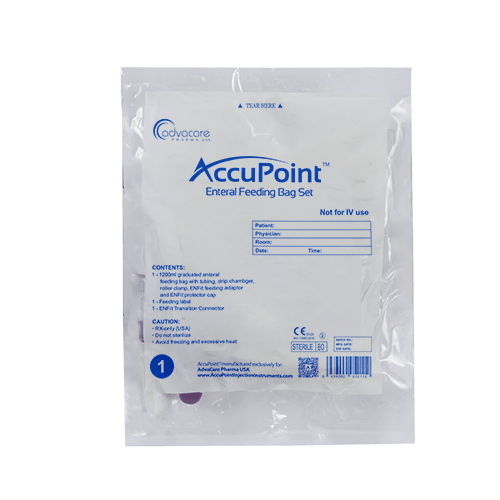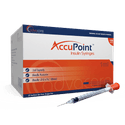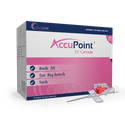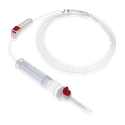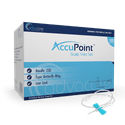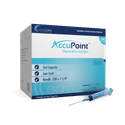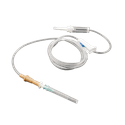- Home›
- Medical Devices›
- Injection Instruments›
- Enteral Feeding Sets›
- Enteral Feeding Bag Set
Enteral Feeding Bag Set
Type
Bag Type
Bag Volume
Set Components
Packaging
What is an Enteral Feeding Bag Set?
An Enteral Feeding Bag Set is used to deliver liquid nutrition directly into a patient's stomach or small intestine. It is used in clinical or home settings for patients who are unable to consume food orally. Feeding kits have two types: pump and gravity and are available in volumes 500ml to 1500ml.
Enteral feeding bag kits typically include a bag, tubing, and various connectors, such as a universal bottle adapter, needle connector, and inlet port. These components work together to create a closed system for the safe and hygienic delivery of nutrition to the patient.
AdvaCare Pharma is a trusted global manufacturer of Enteral Feeding Bag Sets. Our medical devices are manufactured in state-of-the-art facilities located in China, India, and the USA, which undergo regular evaluations to ensure compliance with strict health, safety, and environmental standards.
Product Specifications
Type
Bag
Set Components
Pump
Pump enteral feeding bag set works by pushing the flow of food using the force that comes from the pump. This method allows for precise delivery of a set amount of feed over a specific time period. It is important to note that a pump is not included in this specific enteral feeding set.
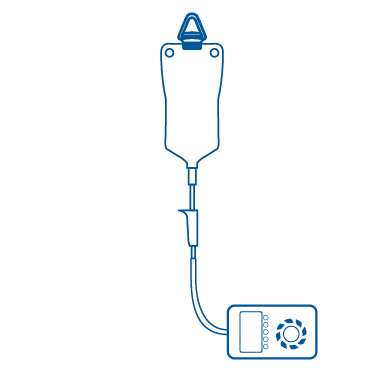
Gravity
Gravity enteral feeding bag set operates by the force of gravity, allowing the flow of fluids from a higher source to a lower point where the patient is located. The flow rate can be adjusted by adjusting the height of the bag, with the higher the bag being hung resulting in a faster flow. This method is widely used for enteral feeding therapy and can be used in clinical and home settings.

Single
Single enteral feeding bag set is a complete kit that contains all the necessary components to deliver liquid nutrition to a patient who is unable to eat orally. It typically includes a bag to hold the liquid nutrition, a feeding tube, and a connector to attach the tube to the bag. These kits are available in different volumes and are commonly used in clinical or home settings.
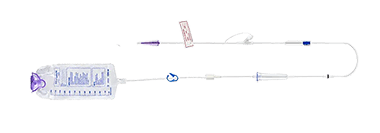
Dual
Dual enteral feeding bag set is designed for patients who require two different types of nutrition or medication. It consists of two separate bags that can be connected to a Y-port adapter to allow for simultaneous delivery. This type of feeding bag set is commonly used in clinical settings for patients with complex medical conditions.
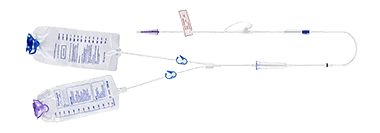
PVC Bag
PVC Bag (polyvinyl chloride) used in the enteral feeding bag set is a medical-grade plastic bag that can hold liquid nutrition safely. It is transparent, allowing for easy monitoring of the amount of liquid nutrition inside, and it comes in various sizes to accommodate different nutrition volumes. PVC bags are compatible with different types of feeding kits and can be disposed of easily after use.
Two-way Valve
Two-way Valve is a device that allows the flow of liquid in and out of the feeding bag. It helps prevent the backflow of liquid and air, making it a crucial component of the feeding bag set. It also ensures the safe and effective administration of enteral feeding solutions.
Plastic Dropper
Plastic Dropper is a component of an enteral feeding bag kit that is used to regulate the flow of the liquid into the feeding tube. It is made of high-quality plastic and is designed to fit securely onto the tube. The dropper is calibrated to allow for precise measurement of the liquid, ensuring accurate delivery to the patient.
Tube
Tube in the enteral feeding bag set is a flexible, medical-grade PVC tube that connects the feeding bag to the patient's feeding tube. It is available in various lengths and diameters and is designed to be kink-resistant to ensure the continuous flow of nutrition. The tube is also transparent to allow for easy monitoring of the flow rate and any potential clogs or obstructions.
Roller Clamp
Roller Clamp is a small device used to control the flow rate of liquid through the tube of an enteral feeding bag set. By squeezing or releasing the clamp, the healthcare provider can regulate the speed at which the nutrition flows into the patient's stomach or small intestine. It is a simple but essential tool for ensuring precise and accurate delivery of liquid nutrition.
Adapter with Cap
Adapter with Cap is an important component of the enteral feeding bag set. It is used to connect the tube to the feeding bag and helps prevent leaks or spills during use. The cap ensures that the feeding bag remains closed and sterile until it is ready to be used.
Why are we a quality Enteral Feeding Bag Set manufacturer?
AdvaCare Pharma is a reputable manufacturer of Enteral Feeding Bag Sets, which are produced under the AccuPoint™ brand in ISO and CE-certified facilities. Our medical devices undergo rigorous inspections and testing to ensure that they meet global health, safety, and environmental standards. We have established a strong presence in more than 65 countries, providing our partners with high-quality medical devices to support their operations.
We take a meticulous approach to ensure that our medical distributors receive only the best-quality products, and we offer FDA certifications for certain product specifications. To ensure compliance with regulatory requirements, all AccuPoint™ medical devices are accompanied by a STED dossier.
At AdvaCare Pharma, we are committed to providing safe, reliable, and innovative medical devices that help our partners succeed in their respective industries.
Uses
How should an Enteral Feeding Bag Set be used?
Before using the enteral feeding bag kit, ensure that the bag and all of its components are sterile and have not been damaged in any way. Start by carefully removing the bag and its contents from its packaging and then inspect the bag and its components for any visible damage or defects, such as leaks or tears.
To set up the bag for use, hang it on an IV pole or other support structure at an appropriate height to ensure that the feeding solution flows at the correct rate. Connect the tube to the feeding pump or gravity feed system, and prime the tubing to remove any air bubbles. Then, open the roller clamp to allow the feeding solution to flow into the patient's enteral feeding tube.
Monitor the feeding solution closely during administration to ensure that the correct flow rate is maintained, and adjust the height of the bag or the roller clamp as necessary.
How should an Enteral Feeding Bag Set be disposed of?
After use, dispose of the feeding bag set and all of its components according to local regulations for medical waste disposal.
FAQs
What are the parts of an Enteral Feeding Bag Set?
The main parts of an enteral feeding bag set include a feeding bag, a feeding tube, an adapter with cap, a roller clamp, a plastic dropper, and a connector.
What is the difference between a pump and gravity Enteral Feeding Bag Set?
A pump feeding bag set uses an electric or battery-operated pump to control the rate of feed, while gravity feeding bag set relies on gravity to control the flow rate of the feed. Pump feeding bag sets are typically used in clinical settings where precise control over feed rates is necessary, while gravity feeding bag sets are often used in home settings.
How should Enteral Feeding Bag Sets be stored?
Enteral feeding bag sets should be stored in a cool, dry place and kept away from direct sunlight. It is also important to check the expiration date before use, and to discard any expired products.
Can Enteral Feeding Bag Sets be used for both adults and children?
Yes, enteral feeding bag sets can be used for both adults and children. However, it is important to use the appropriate size and flow rate for the patient's needs. Children may require smaller volumes and slower flow rates than adults, so consult with a healthcare professional to determine the appropriate feeding regimen.
How should Enteral Feeding Bag Sets be disposed?
Enteral feeding bag sets, specifically single-use sets, should be disposed of in accordance with local medical waste regulations and guidelines. Typically, they are considered biohazardous waste and should be disposed of in designated medical waste containers or through an approved medical waste disposal service.

You might be interested in...
Why AdvaCare Pharma?
As an industry leader, we are aware of our responsibility to provide affordable and sustainable solutions to improve healthcare worldwide.
